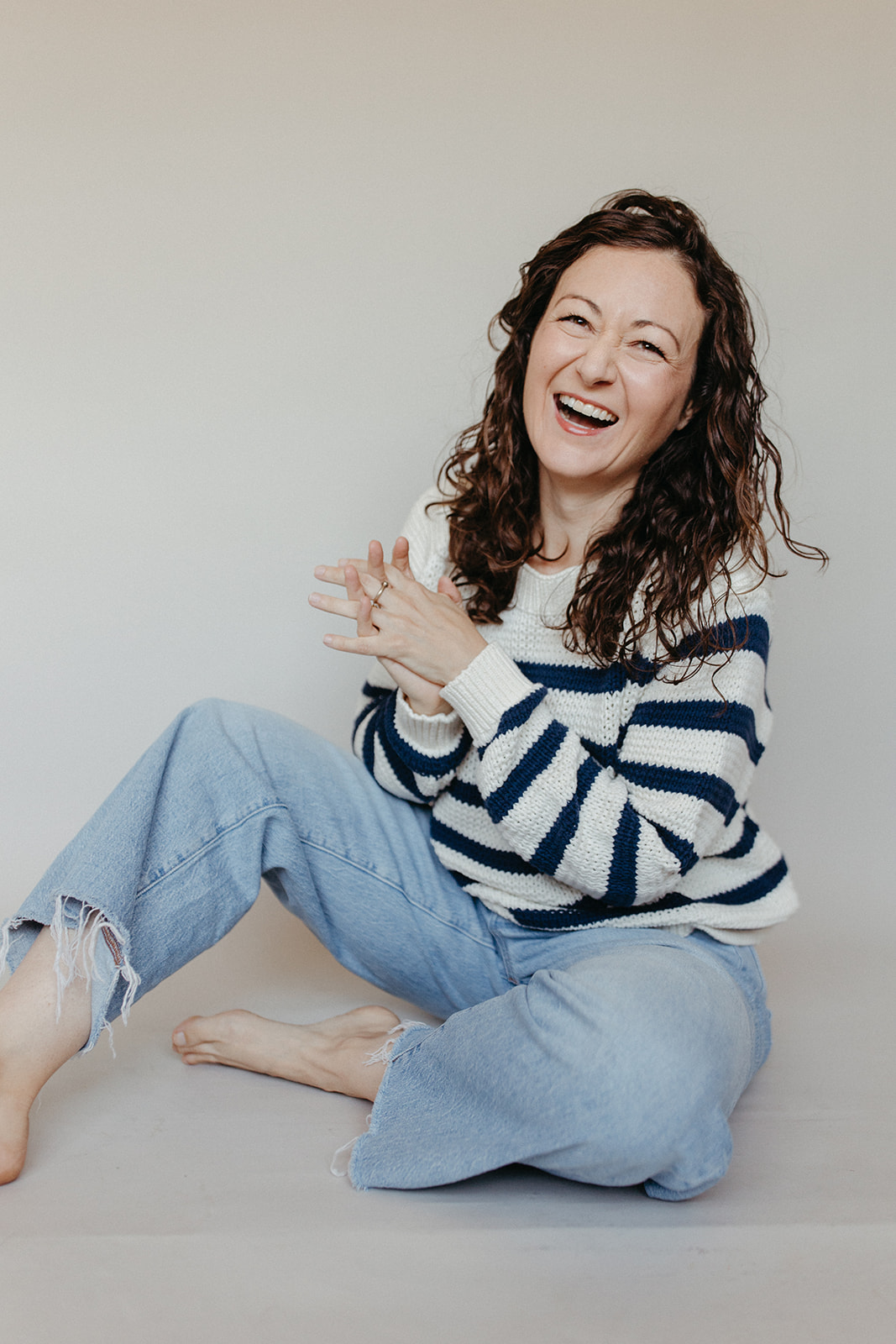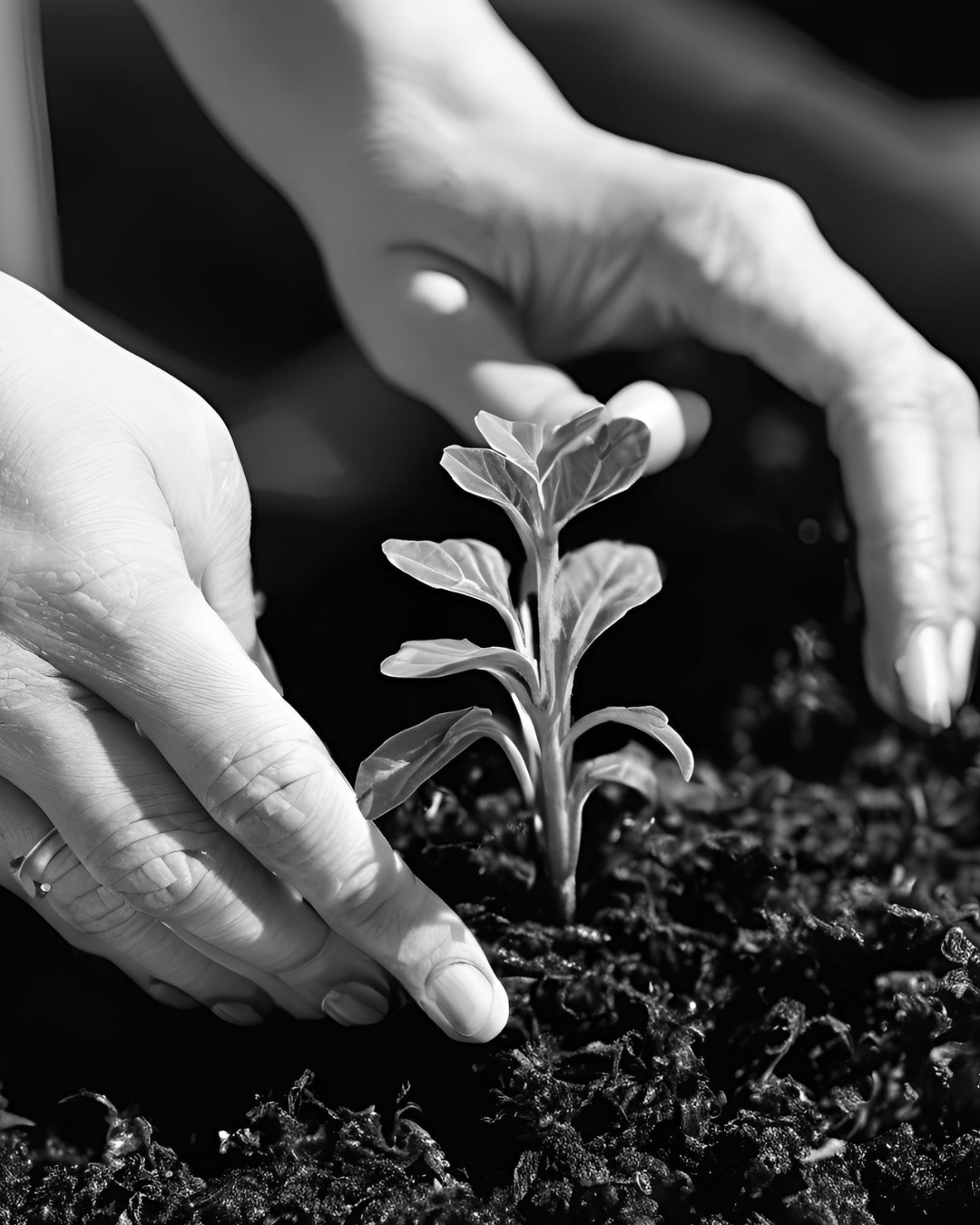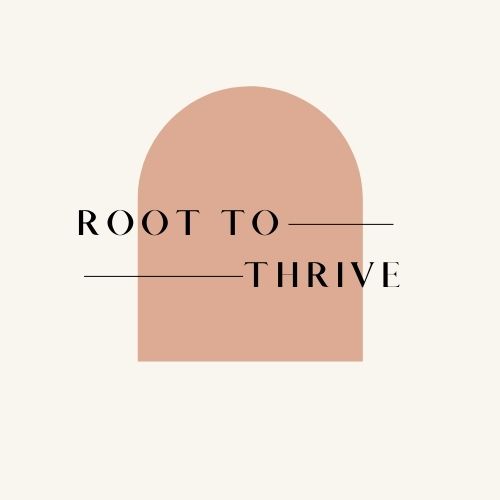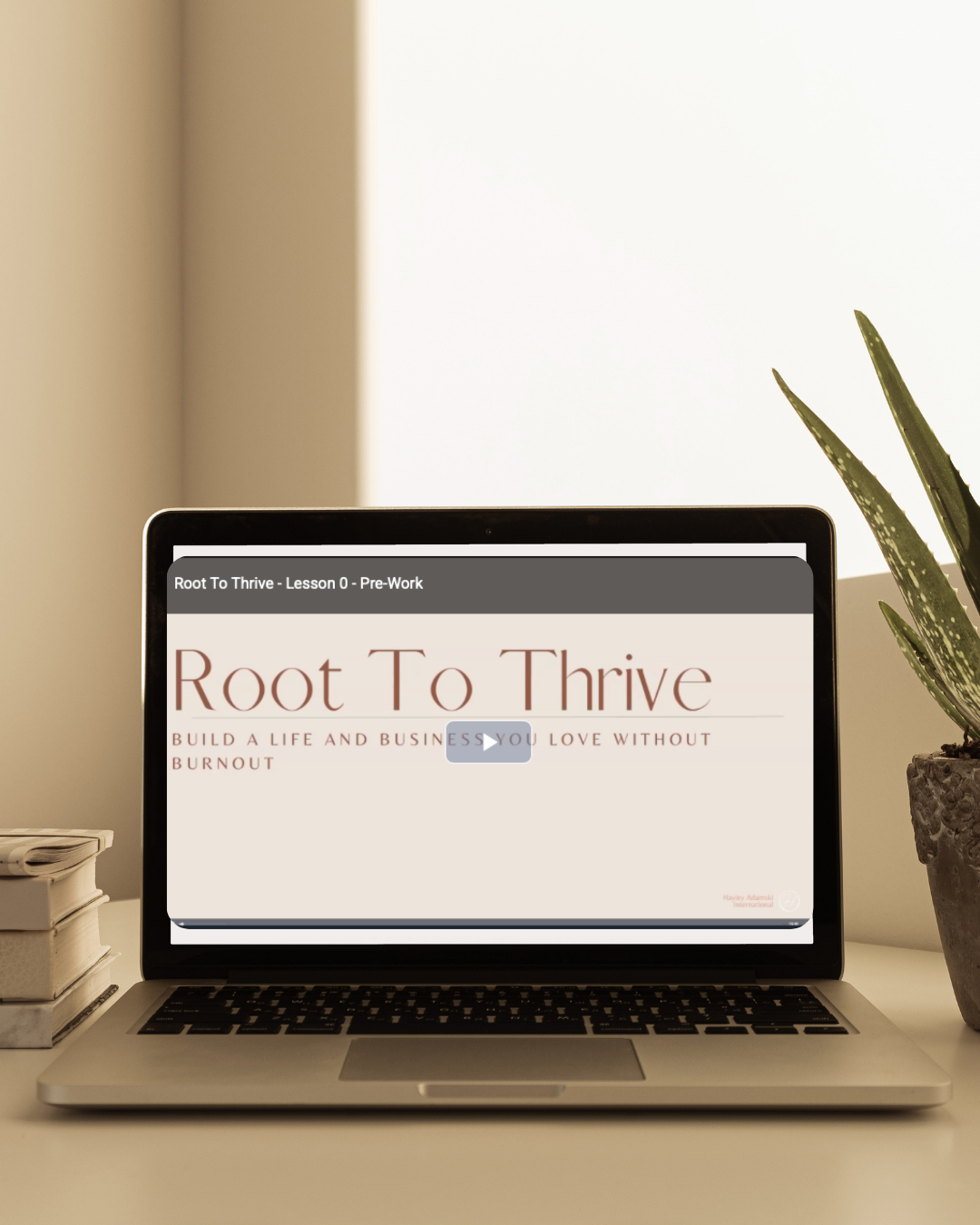You know you want something different for your life, but you don't even know where to begin...
What if creating a life you love with a freedom-based business could be easeful and fun?!

Build a business you love without burnout or overwhelm
If you are an ambitious woman stuck in a 9-5, burnt out, and dreaming about a freedom-based lifestyle, but have no idea where to start, you are in the right place. It's time to build the business that helps you thrive in just 12 weeks!
You know you want something different for your life, but you don't even know where to begin...
What if creating a life you love with a freedom-based business could be easeful and fun?!

You are successful in your 9-5. You make good money, but you still feel drained, burnt out, and lack the joy you used to have in life.
Maybe you've thought:
"Is this just how life is going to be, and I need to lower my expectations?"
"I make good money, why am I still so unfulfilled?"
"I just need to do more self-care, and then I might be ok."
"I want more freedom, but building a business sounds overwhelming."
"I know nothing about starting a business. Where would I even start?!"
Here's the truth:
It's not about more self-care or getting a new 9-5, it's about breaking free and doing life on your terms!
If you don't build a business, you'll keep...
Chasing burnout cycles with no end in sight and less connection to yourself
Feeling unfulfilled and wondering what if
Long for your dreams to come true with no way to make them happen unless you grind more at your 9-5
Feel like you are living the wrong life - that you were meant for more
If you are stuck in the loop of doing more and feeling less, you're not alone.
You're just tired of another self-care strategy that doesn't actually heal you from burnout or make you feel more alive, free and joyful.
You want to grow your joy, your aliveness, your freedom, your ease, your connection, your presence, your fulfillment AND your bank account without a ceiling- this is where that journey begins.
Don't just take our word for it.
"I loved that Root To Thrive looks at everything holistically - not just how to build a business. Before joining RTT, I didn't realize why I was so misaligned and burnt out. RTT helped me build a business and life based on my values, dreams and desires. I don't have to sacrifice my dreams for my business. Instead, my new business is FUELING my dreams!"
Hayley is one of the smartest and wisest people I've had the privilege of working with. Her ability to see sides without taking sides, handle conflict, speak truth and counsel is truly an inspirational thing. She not only knows about business as a whole but excels at it. She is a visionary with the ability to execute and I have learned a lot by working with Hayley."
"I love Hayley’s wrap-around approach to individual leadership and the pushing through when hard things come up. She absolutely encouraged me while I was in a deep period of vulnerability with both my brand & business. What came of that time period was truly magical; my struggle became my story & the personality of my brand was the final result. The best part was that this part, where she really ‘got’ me, was only the beginning of our professional unrelenting pursuit of highest good & teamwork. If anyone understands business, it’s this woman. Thank you, Hayley, for bringing your A-game to my business."
"Hayley has been instrumental in my first 6 months of being a social impact entrepreneur! She has not only coached and guided me through the operations and strategic side of running a business, but the personal and leadership side as well. One of my favorite things about Hayley is that she brings a holistic approach to business, leadership and lifestyle. She has positively impacted my life and I would not be where I am on my business journey if it wasn't for Hayley."
"Hayley is a wealth of knowledge in all matters business and that is not all. She is a spiritually aligned powerhouse. As a sensitive being, I can get overwhelmed easily. Hayley understands that we all operate in different ways. She's been able to give me just enough material to get my wheels spinning, but not so much that I feel like I can't manage it all. When I'm ready for my next step, she's there to support me in whatever way I need. I'm very grateful to have Hayley's guidance."
"Hayley's expertise in social impact and her ability to coach others to increase their impact is immeasurable."
"Before working with Hayley, I felt stuck and didn't know where to start or even who I needed help from. Working with Hayley was like coming to myself and relighting that pilot light for my life. I found a new focus on areas I need to work on and set goals based on my values, which sparked that fire of excitement in my business again. Hayley takes complex ideas and breaks them down into bite-sized pieces and actions, bringing you closer to your goals with ease and clarity. I love how coaching with Hayley felt like it was customized to my business and who I am as a person, keeping my goals aligned and authentic. I would recommend Hayley to anyone who wants a change, feels lost and wants to be an empowered business owner and rock their goals!"
"Hayley truly has a gift in helping people bring out the best versions of themselves. She is an amazing listener and always cared so much about me and all of my life and business goals. I love how Hayley provides me tough challenges and great advice on how to get there. Hayley is fantastic, and I always look forward to our next coaching call."
"Hayley is a wealth of knowledge on non-profit and social enterprise management. Not only does she always seem to have an answer to our questions or challenges, but more often than not she has experienced or walked through these questions and challenges herself."
Now is the Time to Bet on Yourself
A new job, place to live, trip, more money or more self-care aren't going to make you more fulfilled. They are band-aid approaches to dealing with the root cause - your need to create a business that works with your values, rhythms and lifestyle.
Your joy, your health, your fulfillment, your ease, your juicy life, and your financial freedom are ready for you as soon as you say yes to betting on yourself.
You are more ready than you realize.
It's time to take the leap - it's time to reach for the life you want!
It's essential.
It's time to make business feel good!
Root To Thrive is here to help!
Root To Thrive will help you identify and start your business
Whether you already have a business idea, have no idea where to start, or are creating your first digital product, Root To Thrive simplifies the business building process into 12 weeks.
Trainings to fast track your business creation
Build your business in 12 weeks with trainings, guides and pdfs.
Practical techniques to create a successful mindset + habits
Know yourself, overcome limiting beliefs, and master your mind to ensure an aligned and easeful business
Join a Supportive Community
Connect with other like-minded, ambitious women that are choosing their joy and fulfillment and starting their own purposeful businesses

Core Features of Root To Thrive
Root To Thrive is built so that you can build a business on the weekends. By the end of the 12- week course, you could have a profitable business.
Flexible Learning
Watch and complete the 12 weeks of trainings and recorded coaching calls from anywhere at any time.
In-Depth Lessons + Exercises
Access to in-depth video trainings, pdfs and bonuses to ensure your success.
Group Coaching
Weekly group coaching calls to provide support, answer questions and create community connections.
Explore Root To Thrive
A 12-week course + weekly group coaching program
Week #1
Awakening
Noticing Your Present Life
Accepting Your Fears + Stirrings
Acknowledging & Awakening
Week #3
On Purpose
Curiosity as the Foundation to Success
Dreaming big
Discovering Your Purpose
Bonus: Embodiment - An Antidote to Burnout Minicourse
Week #5
Crafting Your Offer
Identifying your Signature Offer
Structure of your Signature Offer
Pricing of your Signature Offer
Week #7
Sales Page Magic
Identify Your Brand
Create your sales page
Create a checkout page
Week #9
Launch Time
Create a launch calendar
Create a rinse and repeat launch
Beta launch your first offer
Week #11
Creating Content that Converts
Learn how to create content that converts
Determine your 5 themes for your content
Create your first 5 pieces of content
Week #2
Knowing Thyself
Deepening Connection to Self
Creating a Magical Life
Identifying Your Superpower
Bonus: Uncovering your Stories
Bonus: Shedding Your Identities
Week #4
Turning your Purpose into a Business
Defining Your Niche
Validating Your Niche
Releasing Fear & Imposter Syndrome
Week #6
Easeful Funnels
Building Your List
Creating your lead magnet
Outlining your nurturing sequence
Week #8
Launching Strategies
Determine your launch strategy
Begin creating your first offer
Week #10
Generating Traffic
Learn the different types of traffic sources
Determine your primary traffic source
Understand how to leverage your traffic source
Week #12
Tracking For Sustainable Success
Understand your metrics
Make small tweaks based on your results
Repeat until you find the most successful path
Next steps for your business
This is for you if you are ready to...
Stop the burn-out cycle, anxiety and overworking, thinking that the harder you push, the more you will earn.
Feel connected to your playful, joyful, relaxed and present self.
Create an impactful business allowing you to live life on your terms

This is NOT for You If...
You want to stay burnt out and aren't open to a new way of working.
You believe that building a business is too hard, scary and that you can't do it.
You prefer to dream about your ideal life, but don't want to go after it.
Meet Your Business + Mindset Coach
Helping ambitious women build a sustainable and successful business without burnout or overwhelm so that they can thrive!

Hi! I'm Hayley Adamski
I have been where you are - working a 9-5, feeling burnt out and wondering if this is what life is really all about - feeling drained, depleted, with little joy, connection and adventure. I wanted more - a life aligned full of ease, joy, nourishment, connection, fun, adventure, and fulfillment. I knew there had to be another way.
After running other businesses, starting businesses, consulting small businesses and coaching hundreds of leaders and entrepreneurs over the last 15 years, I've learned a few things about how to run a successful small business in a simplified and sustainable way that fuels your dream life without hustle or burn out.
I love empowering women to create an easeful and successful business so that they can live the life they were meant to while making the impact they were born to without burnout. Let's do life differently and with a hell of a lot more success and joy, because we deserve it, and it's possible if we are willing to bet on ourselves!
Enter Root to Thrive! Let's go!
Root To Thrive: Upcoming Cohort
Timeline
September 11th - December 4th, 2025
We only run Root To Thrive 2x per year, so don't wait to ditch burnout and start the life of your dreams - you deserve better now.
Investment Options
Secure your spot today!
Root To Thrive
Payment Plan
$347/month for 3 months
Access to all course modules
Downloadable resources
Community support forum
Weekly live Q&A sessions
Lifetime Access
Root To Thrive
Pay in full
$997
Access to all course modules
Downloadable resources
Community support forum
Weekly live Q & A sessions
Lifetime Access
Root To Thrive - VIP
For comprehensive support
$797/month for 3 months
Everything in Root To Thrive
6 one-on-one coaching sessions
Invitations to special events
Early access to new courses
Frequently Asked Questions
12 weeks of course work including video trainings, pdfs, and weekly group coaching sessions.
No problem! Root To Thrive was created with the busy women in mind. All of the group coaching sessions will be recorded and added to the platform within 24hrs.
All cohort members can send a message for Hayley to answer on the group coaching call live and then you can watch the replay to hear the response.
They are made for all skill levels! No matter where you are at and what questions you have, someone else in the group has those same questions! Bring all of your reflections, questions and struggles to the group. They are all welcome!
Root To Thrive was designed for you to complete the coursework during the 12-week program so that you have the accountability and support you need to get it done. However, life happens. You will have lifetime access to the course, so you can always come back and complete the work at a later date.
If you do the work, you will have the start of a business at the end of the 12-week program. Of course, we can't make any guarantees, but if you are committed to doing the work outlined, you will have all the information you need to create a business generating income within 12-weeks.
Group coaching sessions are typically 1 hour each week and are recorded.
Prove that you have put in effort to complete the course within the 90-day period and if you still aren't satisfied, we will provide you with a full refund.
Stay in touch! Join our newsletter!
Don’t miss out on expert guidance and exclusive business and mindset tips!
Need help or have a question that isn't addressed above? Email us at hayley@hayleyadamski.com
We make reasonable efforts to ensure that we accurately represent income-earning potential. However, there are no guarantees that you will earn a specific level of income. You accept the risk that earnings and income will vary by individual. Like any business venture, actual results will depend on many factors outside of our control, including individual abilities, effort, expertise, opportunities, market conditions, and unique circumstances. You agree we are not responsible for your earning potential, future income level, business failures or successes. You agree that past financial success by yourself, our company, or others is not a reliable indication of your future success or income earnings.
© Copyrights by Hayley Adamski International, LLC. All Rights Reserved.